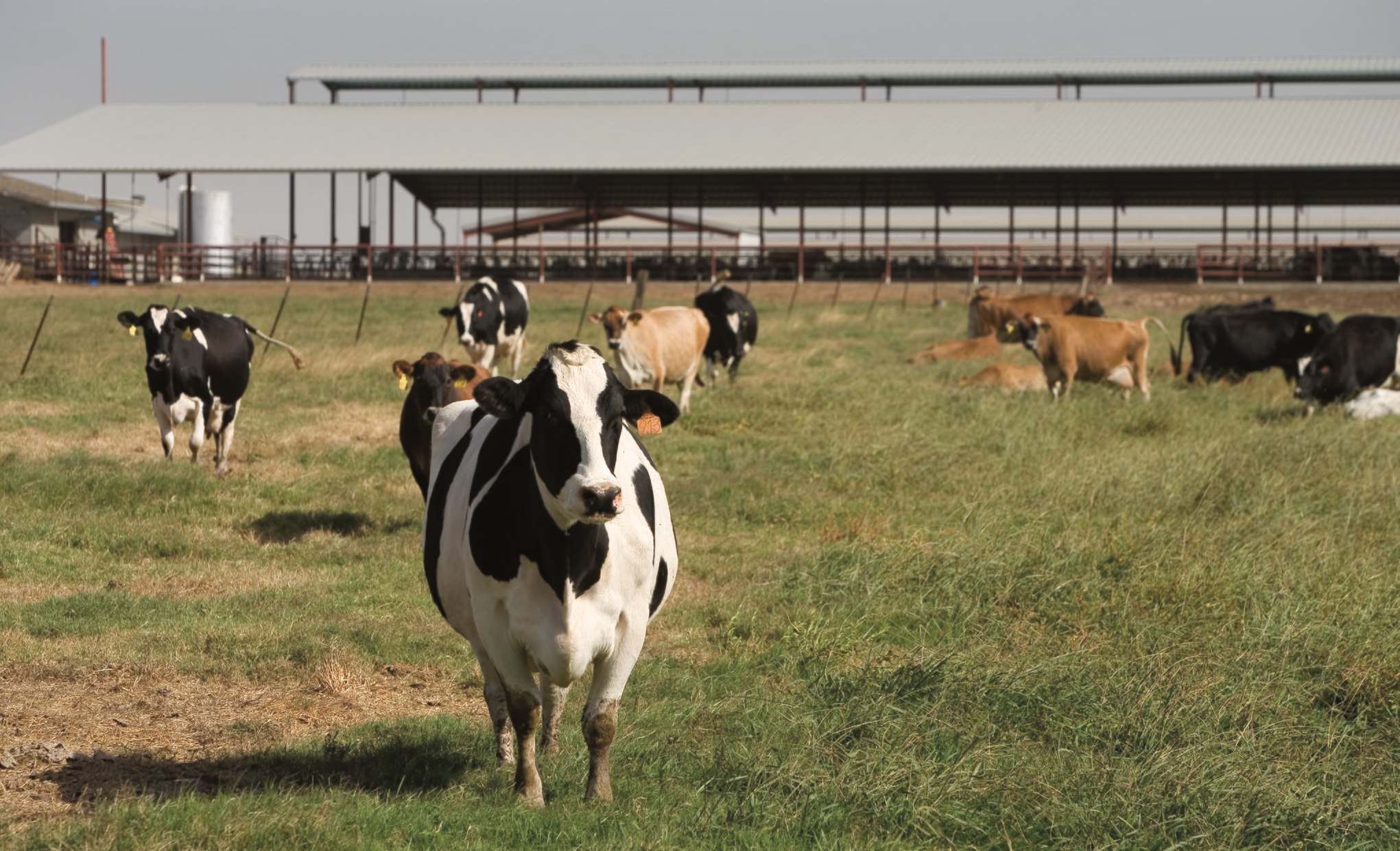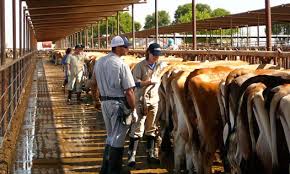
WCAHS Has a New Four-Year Research Project
Helping Dairy Workers Reduce Their Exposure to Infectious Disease
We received exciting news this fall that an additional research project, “Reducing occupational exposure to zoonotic pathogens in California dairy farmworkers,” has been awarded funding from the National Institute for Occupational Health and Safety, increasing the number of primary WCAHS research projects to five.
The new project aims to lower dairy worker exposure to infectious disease spread through infected cows by better understanding which infectious agents are most prevalent in large dairies and which worker tasks and behaviors are producing the greatest risk for exposure.
Rob Atwill, DVM, MPVM, PhD, of the UC Davis School of Veterinary Medicine, will lead the project. He specializes in infectious disease in domestic and wild animals and has much experience with cattle.
Changing Western dairy industry
 The dairy industry in the western U.S. has drastically changed over the past 20 years, ranging from increasing herd size, adopting technologically advanced milking parlor designs and equipment, ramping up overall farming operations, and becoming more dependent on a large immigrant work force.
The dairy industry in the western U.S. has drastically changed over the past 20 years, ranging from increasing herd size, adopting technologically advanced milking parlor designs and equipment, ramping up overall farming operations, and becoming more dependent on a large immigrant work force.
These advancements put dairy workers and cows in close contact with one another and at greater risk for zoonotic disease - infections that are transmitted from animals to humans or vice versa if proper safety precautions are not taken.
California dairy farms often have one or more cattle infected with zoonotic pathogens, such as E. coli, Salmonella, and Cryptosporidium parvum. These bacterial pathogens and others can cause mild to severe sickness in humans, including diarrhea, stomach cramps, and fever.
How dairy workers can get infected from sick cows
Dairy workers can be exposed to these types of pathogens if they get them on their clothing, hands or faces, which can occur with common work tasks such as cleaning out manure or giving drugs to sick cattle. The risk can drastically increase if workers improperly wear their protective equipment or if they work on dairy farms with a poor safety culture.
 Atwill and his laboratory are collaborating with a number of participating California dairies, mainly in the Central Valley, to identify and quantify specific dairy pathogens. New lab techniques are being developed by Atwill’s team to achieve this.
Atwill and his laboratory are collaborating with a number of participating California dairies, mainly in the Central Valley, to identify and quantify specific dairy pathogens. New lab techniques are being developed by Atwill’s team to achieve this.
The next step will be focusing on the “human context” - discovering what personal protective strategies are actually incorporated by dairy workers and what risky behaviors can be reduced. Dairy workers will be observed as they complete their daily tasks, perhaps by using wearable technology, like GoPros.
Protecting dairy workers through improved safety training
Atwill will also be working on this part of the project with longtime WCAHS investigator and Director of Outreach, Stephen McCurdy, MD, MPH, who is expert in public health and occupational medicine, and WCAHS Education and Outreach Specialist Teresa Andrews.
Once the types of occupational tasks that poses the highest risk for dairy workers are identified, McCurdy and Andrews will help Atwill develop educational materials for dairy supervisors to train dairy workers on how to best protect themselves. Andrews will work to make these materials both linguistically and culturally appropriate because so many dairy workers are immigrants.
The overall goal of the research project is to “make the safety practices more effective and dairy-specific,” says Atwill, so that the health of dairy workers and continued productivity of the dairy can be better ensured.
